I publish here the talk I’ve given at the Mis-Shapings conference last September 13 at Queen Mary University.
Do we believe in physiognomy? Do we believe, as the Italian anthropologist Cesare Lombroso did, that psychological, emotional, moral attitudes of the individuals can be divined by observing the shape and features of the face?
No, of course we don’t. Physiognomy is pseudo-science, dismissed knowledge, superstition. We can’t make assumptions merely relying on appearances. Can we?
Actually, we do. We do it in our daily life, often unintentionally. But even when we look at artworks we allow us to believe in physiognomy.
We are persuaded by the psychological meaning of a portrait, and we accept that the representation of the human figure can reveal something hidden below the surface. Physiognomy seems to be the cultural translation of a long-standing human attitude at connecting what is visible of the human body to what is invisible and concerns the soul and the mind.
Ultimately, the controversial knowledge of physiognomy is at the same time rationally dismissed and unconsciously reactivated. Leonardo Da Vinci himself was bewildered by this contradiction. Stating the importance of anatomical knowledge for the representation of the human figure, he appears to reject the value of classical physiognomy: «I won’t mention the misleading physiognomy and chiromancy, as there is no truth in them, and they have no scientific foundations», he writes in his fragmentary notes on art, posthumously collected and not entirely correctly published as a Treatise on painting. But then he goes on:
However, it is true that the signs of the face partially show the nature of humans, their vices and attitudes; in the face the signs separating the cheeks from the lips, and the nostrils from eyes orbits, are evident in happy men, who are often smiling; less evident in thoughtful men; while men with highly pronounced face parts are bestial and irascible, with poor judgement.
While claiming that physiognomy has no scientific value, Leonardo acknowledges a series of physiognomic assumptions. As if they belonged to indisputable common wisdom, a sort of innate knowledge.
Almost three centuries later, opening his Essays on Physiognomy, Johann Kaspar Lavater is forced to explain the reasons why physiognomy is «so zealously opposed, and so loudly ridiculed». His main explanation is that its opposers secretly believe in physiognomy and fear its responses:
I cannot help considering this violent opposition of the vicious to physiognomy as the most certain proof of a secret belief in the science. They are convinced of the truth of it, in others, and tremble that others should read its truth in themselves.
Cultural history of physiognomy entails the existence of a deeply rooted popular physiognomy. Martin Porter argued that physiognomy explicitly appealed to an innate hermeneutic faculty lodged in people’s mind. This innate hermeneutic is referred to as fisnomy, which is the vulgarisation of the word physiognomy. Fisnomy is a natural physiognomic intelligence, «that general, intuitive, even unconscious ability that human beings somehow have, which enables them to discover something about a person simply by looking at, and listening to, them». It is an instinctive physiognomic consciousness, cultivated through the experience of being face-to-face with people. Physiognomy is conceived as a natural language, active regardless and beyond what is written in books. Lavater himself states the existence of a «primary physiognomic sense»; and «natural physiognomy» is mentioned by Hegel in his Phenomenology of Spirit.
The natural fisnomical intelligence of popular physiognomy is generally activated by anomalies, exceptions, incongruous details spotted on the human face. Despite its rigorous and systematic appearances, physiognomy as a discipline and a science is based on the same idiosyncratic principles. In the treatises that belong to the galaxy of physiognomy, the deciphering of the human face is generally enabled by deformation. To grasp the essence of humanness the average human face needs to be confronted with a divergent form. In the most famous physiognomic treatise of the Early Modern period, De humana phisiognomonia, first published in 1586, Giovanni Battista Della Porta compares the human physiognomy to the physiognomy of animals.
These comparisons result in eerie morphings merging human and animal images, which demonstrate nothing and are either disturbing or comical to a modern observer. Della Porta’s juxtaposition of heads is far from self-explaining. The meanings attributed to face forms are largely entrusted to verbal language. No univocal interpretation of images is possible without the help of words.
The exact meaning of the analogies between the head of a dog and Plato’s head must be enforced by written words and supported with quotations from ancient authors. Examples could be multiplied: interpretations of facial features established by physiognomists are utterly arbitrary and questionable, if not contradictory.
Mostly building on Della Porta’s insights, later physiognomists keep relying on alterations, comparisons, anomalies that consistently mirror the human face in its possible deformations. Mis-shapings enable the comprehension of the human nature.
Charles Le Brun shifts his analysis of facial anatomy from its static and permanent features to the variations and movements produced by the pressure of passions. In Le Brun’s view, the human face no longer exists: what’s left is a series of expressions that deform the face according to the passage of emotions.
Alternatively, the human face is understood as the result of genealogies tracing the evolutions from un-humanness to humanness. Petrus Camper, who in his anatomical Dissertations distinguished between different “face angles” to classify different typologies of people, tested his theories by tracing the transformation of the head from the orangutan to the quintessential beauty of the god Apollo.
Lavater, for whom physiognomy is the science of recognising divine perfection in the human shape, pushes back the historical morphology of the human face directly to the frog. In addition, Lavater’s Essays recurrently exhibits deformed images of the face and representations of bodily anomalies.
The overall impression emerging from the physiognomic galaxy is a stream of floating features, hard to be fixed, described, and established once and for all. Sensing and in fact describing the inherent instability of the face, Lavater stated that the ultimate physiognomy could be understood only after death, on the features of the dead body. Accordingly, he synthesised the ideal physiognomy in black silhouettes, where actual facial traits are erased in favour of abstract outlines.
To stick with a definite meaning, the face needs to be stilled, deprived of its mobility, that is, of its multiple capacities of expression. As far as the living body is concerned, Lavater’s science is sieged by mobility, which seems to penetrate his Essays and jeopardise his certainties. Lavater even refers to Hogarth’s famous etching Characters and caricatures, showing how the human face is constantly morphing, and its truth seems to lie in deformation and motion.
Caricature compares here, at the heart of the history of physiognomy, as a sort of stress-test challenging a final and conclusive definition of humanity. Georg Christophe Lichtenberg rejected Lavater’s physiognomy entirely, arguing that the meanings we read on a face are determined by subjective gazes, projective drives, individual experiences. Our will to knowledge about the human face automatically misshapes it. In a way, we always draw caricatures while we try to make sense of a human body. Not by chance, Lichtenberg was a humourist, a writer of satirical aphorisms.
The prominent caricaturist Thomas Rowlandson drew a sketchbook of Comparative Anatomy, exploring the resemblances between the countenances of men and beasts.
Rowlandson is evoking Della Porta’s physiognomy, but with an openly satirical intent. He makes explicit the subtle, unintentional comic effect of many visualisations of physiognomic theories. Indeed, in Francis Grose’s manual Rules for Drawing Caricaturas, published in 1788, the techniques of drawing caricatures were directly derived from the physiognomic tradition.
Many human faces have striking resemblances to particular animals; consider what are the characteristic marks of each animal, and procure or make accurate drawings of their heads and features; and from them sketch out the human face, retaining, as much as possible, the leading character of the particular animal resembling your subject. Many examples of this kind are exhibited in Baptista Porta’s Treatise on Pshysiognomy. Hogarth has also given some instances of these resemblances.
Grose quotes Della Porta and Hogarth without sensing any difference between the status of caricature and the status of physiognomy. At this point, caricature is “physiognomy unchained”, a form of wild, bold, and loosened physiognomy. And it becomes even more evidently so with the interpretation of physiognomy proposed by Rodolphe Töpffer, the forerunner of modern cartoon and caricature according to Gombrich.
Töpffer clarifies that the mobility and variability of the human face can’t be reduced to a set of fixed rules, framed into a system of immutable meanings. Töpffer dissolves physiognomy into sequences of moving traits where the understanding and recognition of the human face is entrusted to its mutability, to the multiplicity of its expressions, and rendered through a synthetic graphic sign that rejects likelihood and emphasises interpretation.
In Töpffer’s sketches physiognomy seems to vanish into caricature, thus liberating the mis-shaping potential implicit in physiognomy from the beginning. This process implies a double and mutual disclosure: on the one hand, caricature reveals deformation as the unescapable hidden principle of physiognomy; it shows that interpreting the human figure always means misshaping it. On the other hand, this process suggests that caricature is the afterlife of physiognomy, its survival, because through deformation it activates and stimulates the instinctual physiognomic consciousness of fisnomy. Caricatures keep the natural language of physiognomy alive, by claiming the paradoxical seriousness of an archaeological wisdom according to which the authentic nature of a person can be divined by analysing his/her body and face. Both caricature and physiognomy are forms of “emotional knowledge” based on an idiosyncratic relationship with the world.
But let’s follow this liason dangereuse a little bit further into the modern period. During the second half of the Nineteenth Century, emerging “human sciences” such as phrenology, psychiatry, anthropometry, criminology sought to frame the interpretation of the body and mind within a strict, normative “evolution” of physiognomy designed to support social order and control. Perfectly echoing the physiognomic tradition, rather than explaining what a human being is, these disciplines mostly focused on anomalies, diversities, divergencies, deformations. Famously, the already mentioned Lombroso, who spent his life studying faces and skulls of criminal men and women, described the facial features of the deviant replying the abstract models of physiognomy. Despite the scientific appearances, his verbal portraits are arbitrary and biased, and often endowed with illustrations that deviously deform the subjects, thus resulting in proper caricatures rather than scientific records.
Indeed, while Lombroso is writing caricature has already known its golden age. And it is opposing to the rise of the scientific physiognomic offensive its unofficial physiognomy. Honoré Daumier had reacted to the mounting physiognomic obsession by extending the catalogue of deformation provided by science, and including in it the bourgeois and conservative establishment. Daumier unmasked the official physiognomy by applying it to the entire society and made the public opinion aware that there is no normal, no legitimate body. While psychiatry was collaborating with the police to restrict the circulation of the poor and marginalised people, Daumier confined to the asylum the political establishment.
Daumier is truly, in Baudelaire’s words, the Lavater of modernity, as in his work once again caricature stems from physiognomy and fights against it; it uses the same emotional knowledge of physiognomy to uncover divergent images of society.
Aware of the potentially subversive meaning of caricature, in 1936, with Nazi Germany at Austria’s doors, Kris and Gombrich designed an exhibition of Daumier’s caricatures in Vienna. In the climate of rising fascism, the two scholars elaborated the idea of caricature as a cognitive and perceptive experiment that, relying on the functioning of the unconscious, activated a form of unveiling knowledge that triggered opposition to conventional representations of reality. Among other things, Nazism was the tragic imposition of an official physiognomy, which of course, as any other physiognomy, was endowed with deformation. Nazism and fascism established the representation of the body, both social and individual, as a political battlefield. Their totalitarian body needed to be disfigured and misshapen to be contrasted.
Applying these insights to the context of fascist Italy, I argue that visual and verbal caricatures from the period recorded emotional reactions to fascist’s politics of the body. Caricatures opposed the spreading of a “physiognomy of fascism” determined by the pervading exposure of the image of Mussolini, the cult of the heroic, performative, masculine body, and culminating in the racial laws that in 1938 established State racism.
I try to explain myself with an example, which is also my conclusion. In 1921 the Italian journalist Ugo Ojetti depicted this verbal portrait of Mussolini, to praise his oratory performances, and create for him a symbolic physiognomy:
He [Mussolini] has two faces in one: the upper face, from the nose up; the lower one, mouth, chin, jaws. […] The round eyes close to each other, the bare and open forehead, the short and quivering nose, give shape to his mobile and romantic face; the other one, straight lips, prominent mandibles, squared chin, is his fixed face, voluntary, let’s say classic. When he raises his eyebrows, they form on his nose an acute angle as in a Japanese mask, sarcastic and tragic. When he frowns, the eyebrows form a neat horizontal line, and the eyes disappear under the two dark arches, and in between the half baldness and the chin a steady and gloomy mask appears, which can properly be said napoleonic.
This representation of the face is meant to activate our fysnomical intelligence: we are asked to read in his facial features the salient traits of Mussolini’s personality; to believe that his destiny of Chief is written on his face. As for many physiognomic portraits, it appears to be accidentally comic. Indeed, it takes just a slight stylistic increase to turn the celebrative portrait into a caricature, and to overturn the emotional meanings attached to it, as in this description from the pamphlet Eros e Priapo by Carlo Emilio Gadda, written in 1944:
From up there the grunts, the Priapus-like jumps, the wide-opened eyes, the arrogant raising of the face. And after the exhibition of the dictator-shaped chin, and of the belly, the sticking out, prolapsed, belted big belly; after waggling on his heels, and knees, with his huge, clumsy, unwanted bottom, here here here eja eja eja the glorious, masculine rape: and the consequent manly emission, so much for the «peoppple».
Despite focusing almost on the same facial features, the portrait tells us something completely different. However, to understand it we still rely on our fysnomical intelligence. While we laugh, we truly believe that Mussolini’s tragic ludicrousness was written on his face. Rationally, we perceive something arbitrary in this violent – though deserved – disfigurement.
The uncanny feeling associated with the violence of caricature also explains why it has been frequently addressed as regressive, in contrast with Gombrich’s interpretation. Adorno stated that, even when their intent is to criticise power and social order, satire and caricature are essentially conservative, precisely because they rely on a physical, emotional persuasion rather than on rational arguments. This kind of medium, Mike Goode wrote, «literally sought to sway public opinion by convulsing people’s bodies with laughter».
Putting aside the problem of Adorno’s questionable sense of humour, it is a fact that caricature’s truths are never rational: they are paradoxical and hyperbolical, instinctual and emotional. And this is, I argue, the consequence of its descent from the emotional knowledge of physiognomy.

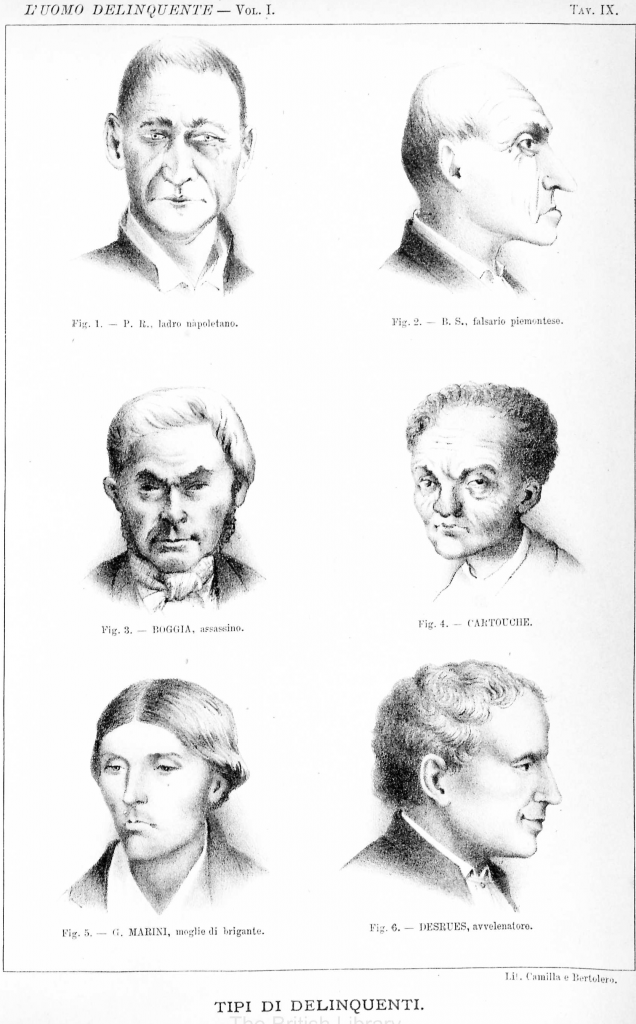
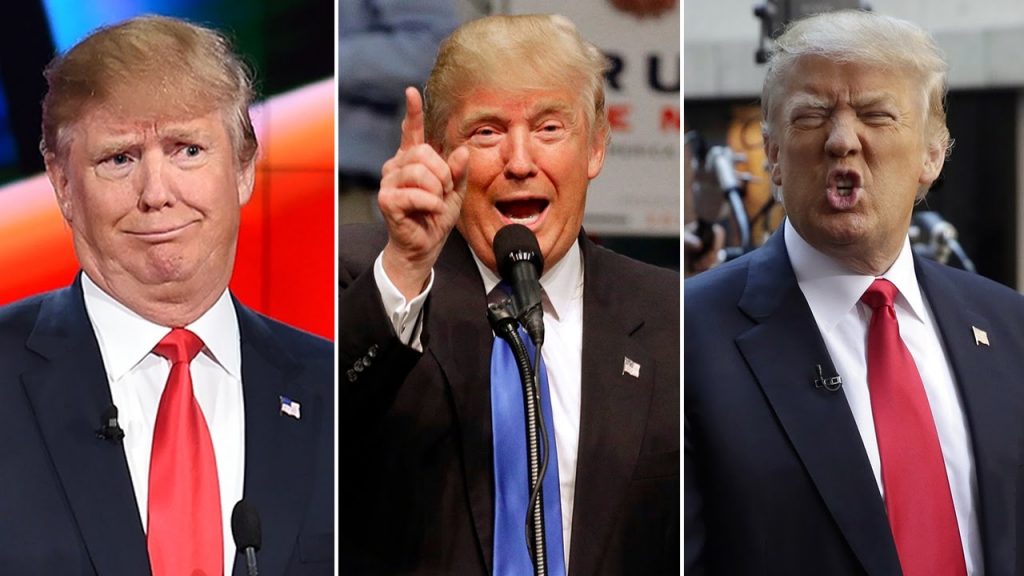
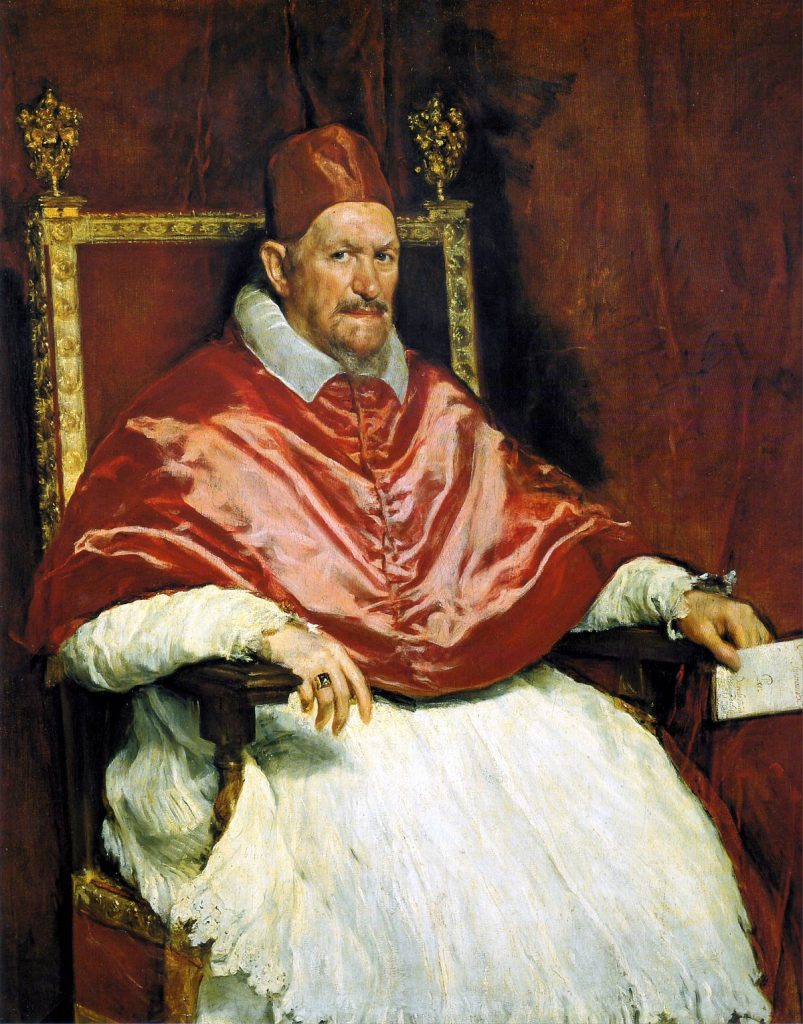
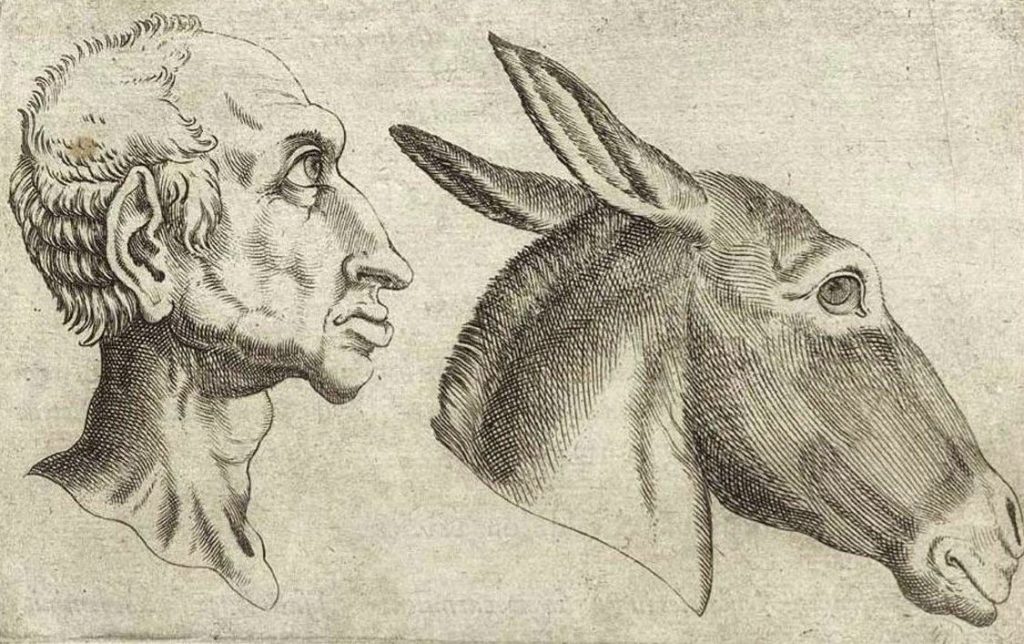
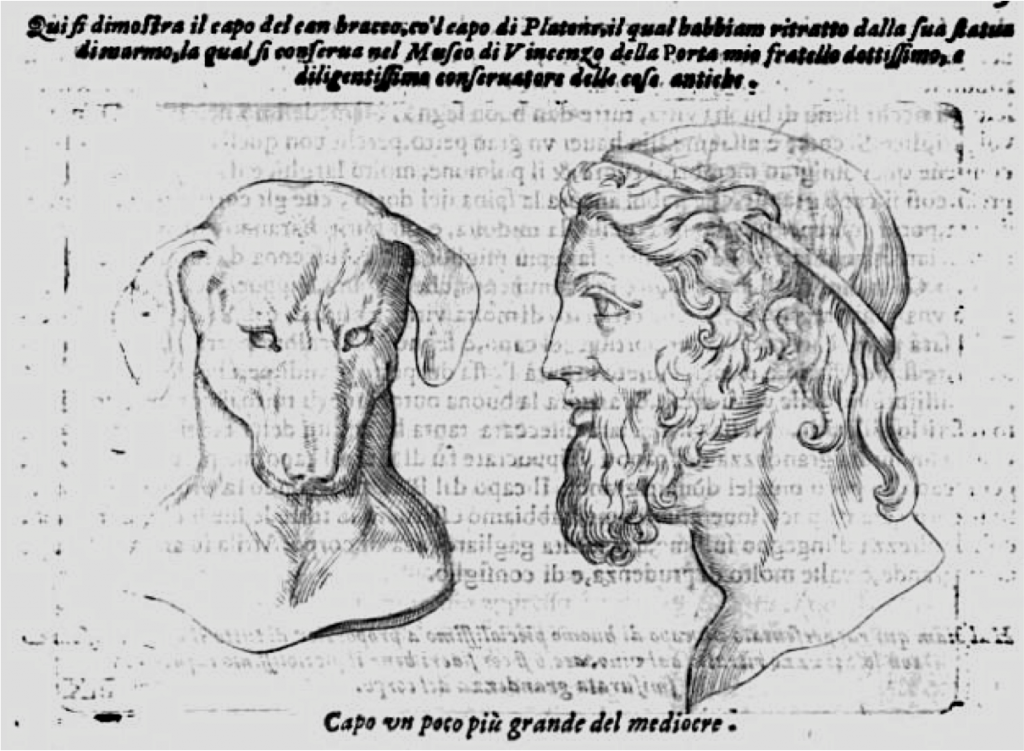
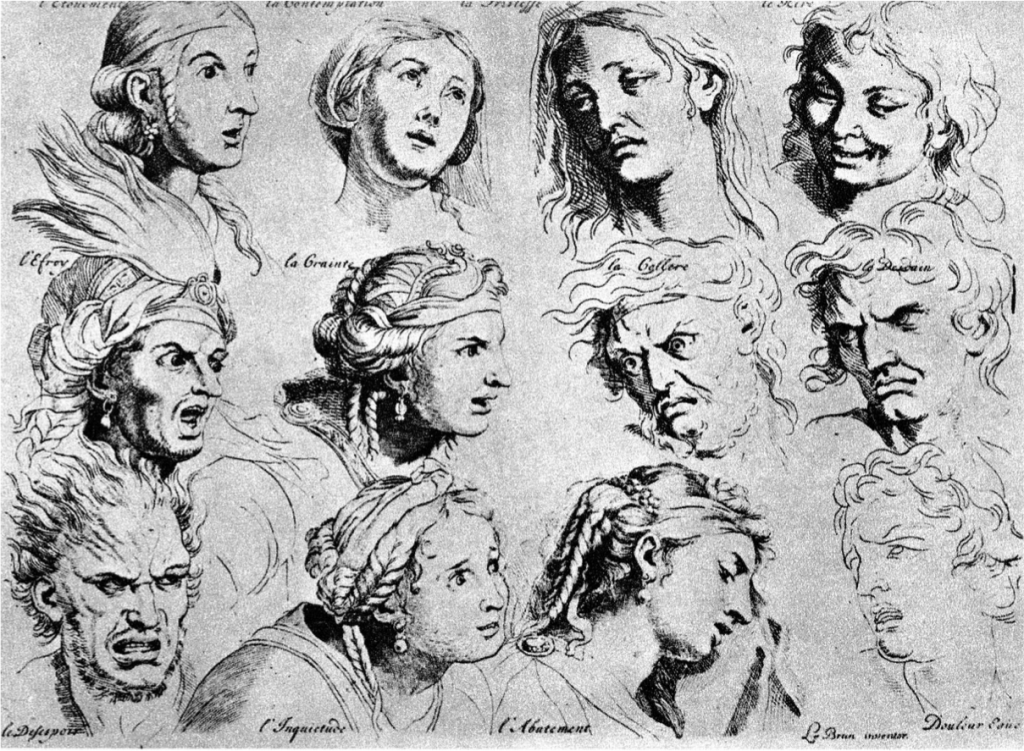
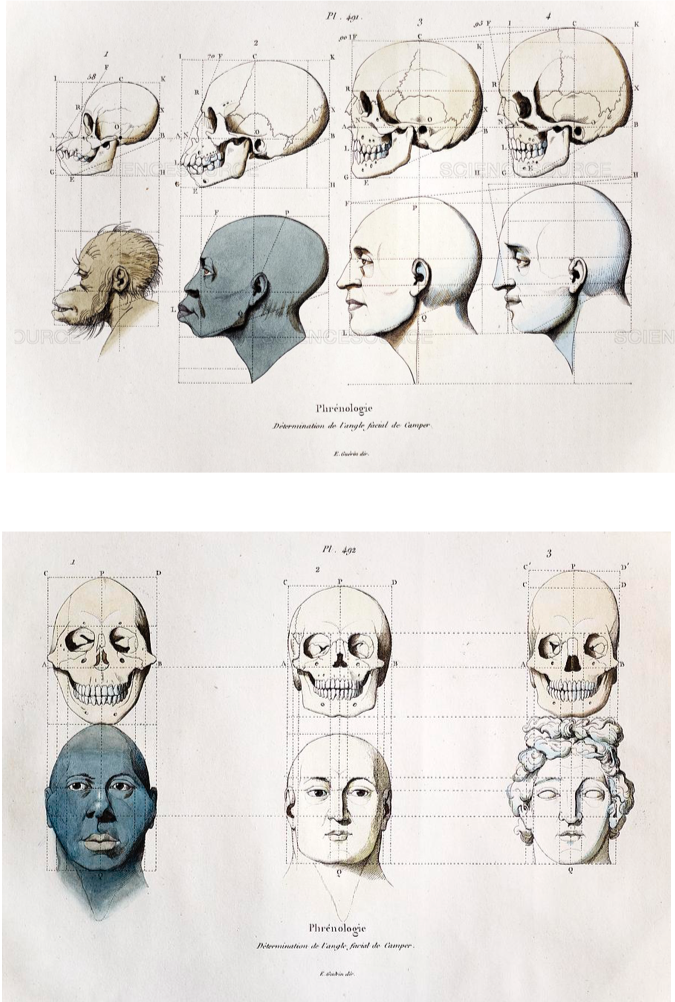
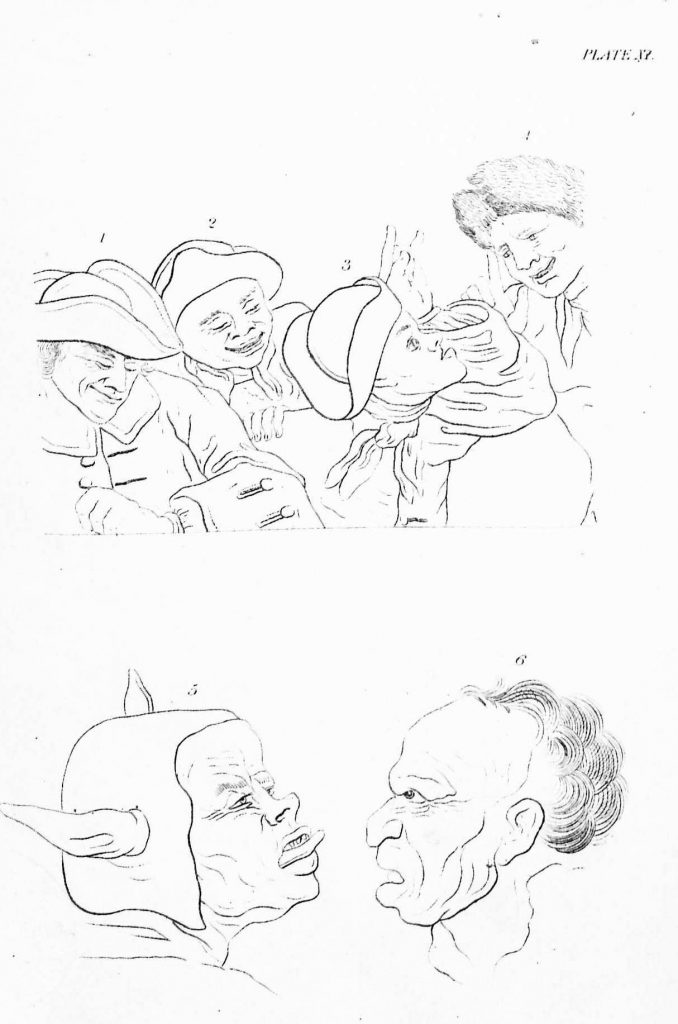

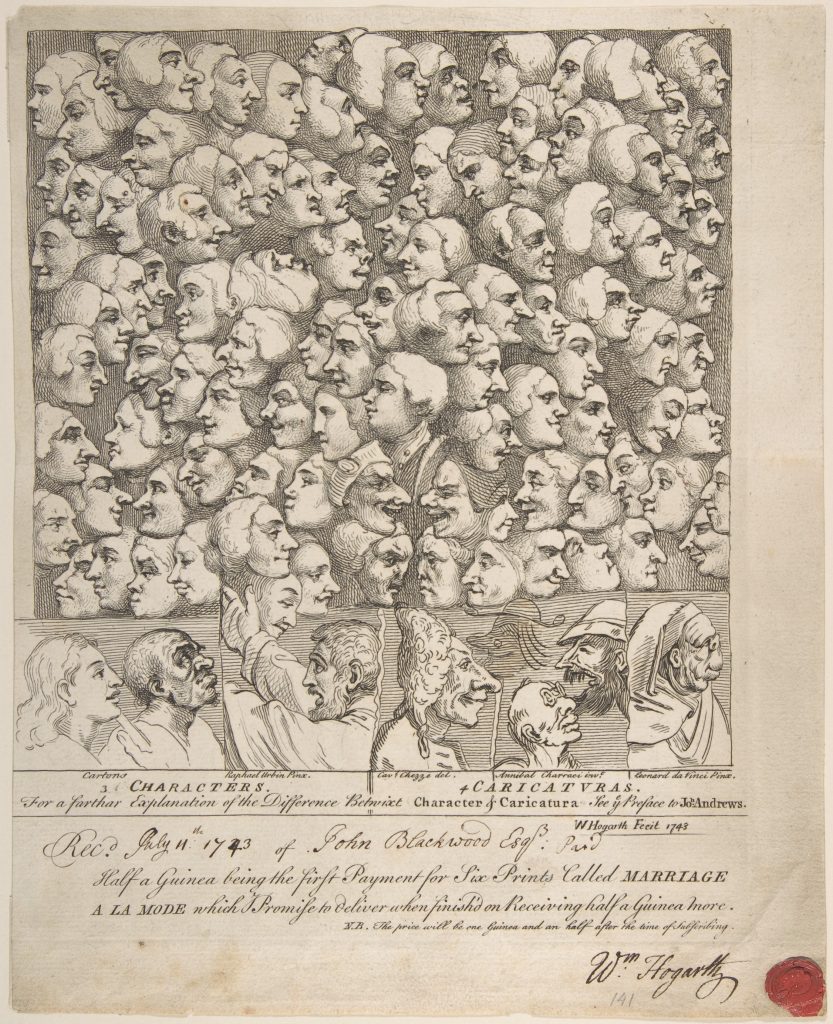

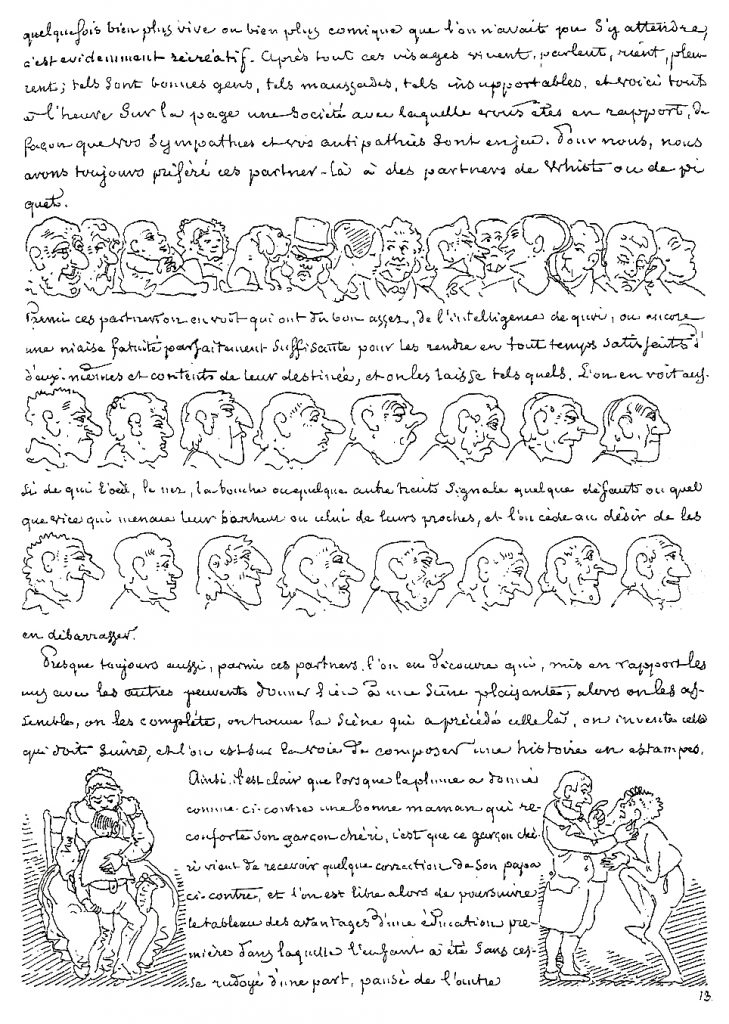
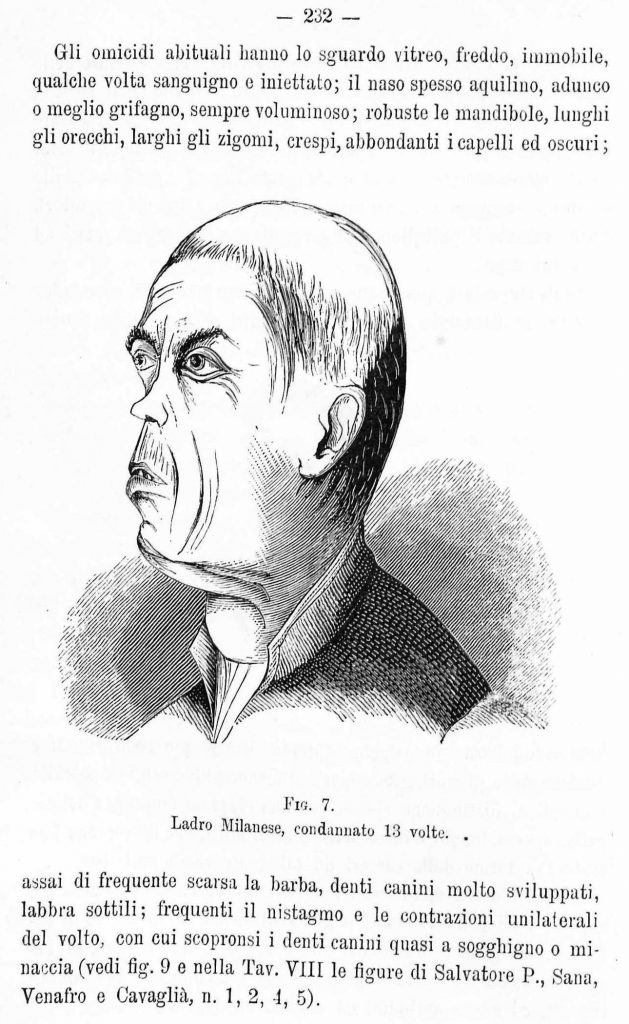
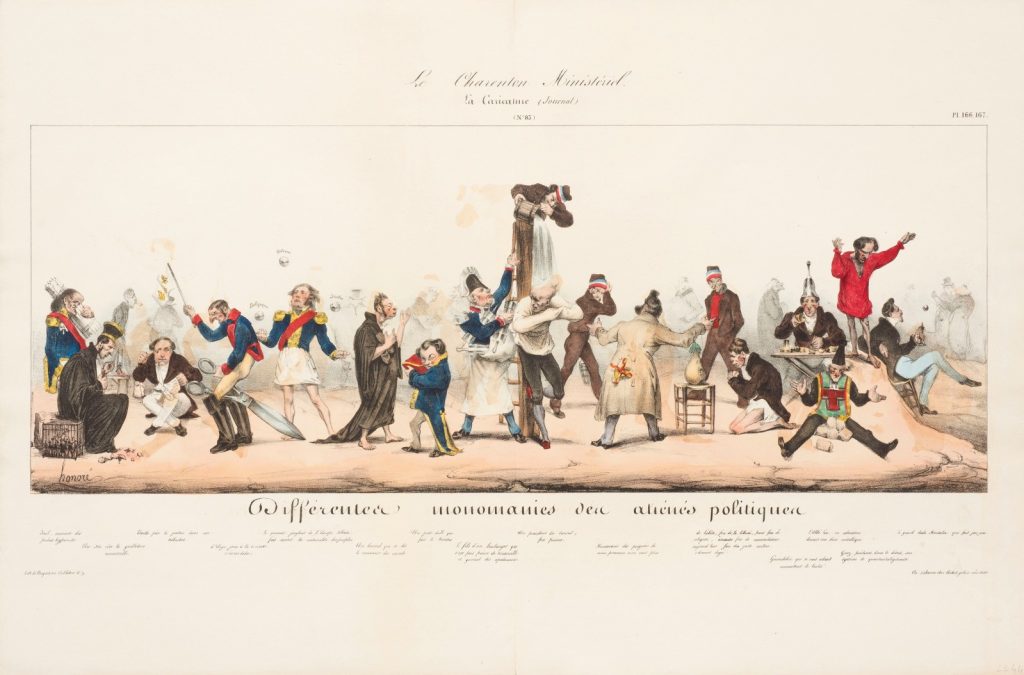
I’ve been browsing on-line more than three hours nowadays, but I never discovered any fascinating article like yours.
It is lovely worth sufficient for me. Personally, if all webmasters and bloggers made just right content as you did, the web can be a lot more helpful than ever
before.
Excellent post. I used to be checking continuously this weblog and I am impressed! Extremely useful information specifically the remaining phase 🙂 I maintain such information a lot. I was seeking this particular information for a very long time. Thanks and good luck.
you have an awesome blog here! would you wish to make some invite posts on my blog?
Hello. splendid job. I did not anticipate this. This is a fantastic story. Thanks!
Hello very nice web site!! Guy .. Beautiful .. Amazing .. I’ll bookmark your web site and take the feeds additionally…I am glad to search out a lot of useful information here in the post, we’d like work out extra techniques on this regard, thank you for sharing. . . . . .
Incredible! This blog looks exactly like my old one! It’s on a entirely different topic but it has pretty much the same layout and design. Great choice of colors!
magnificent points altogether, you just received a emblem new reader. What could you recommend about your submit that you made a few days in the past? Any certain?
Hello, i read your blog occasionally and i own a similar one and i was just wondering if you get a lot of spam feedback? If so how do you reduce it, any plugin or anything you can advise? I get so much lately it’s driving me crazy so any help is very much appreciated.
I precisely had to appreciate you once more. I do not know the things I would have made to happen in the absence of the type of advice shown by you relating to my field. Entirely was an absolute horrifying case in my view, however , coming across this expert tactic you dealt with that took me to leap over joy. Now i’m happier for the information and hope that you find out what a great job that you’re providing educating the others by way of your webpage. Most likely you haven’t encountered any of us.
Hi, i think that i saw you visited my site thus i came to “return the favorâ€.I am attempting to find things to enhance my website!I suppose its ok to use a few of your ideas!!
wonderful post, very informative. I’m wondering why the other experts of this sector don’t realize this. You must continue your writing. I’m sure, you’ve a huge readers’ base already!
Simply desire to say your article is as astonishing. The clearness in your post is simply great and i can assume you’re an expert on this subject. Well with your permission let me to grab your feed to keep updated with forthcoming post. Thanks a million and please keep up the gratifying work.
wonderful issues altogether, you simply gained a new reader. What might you recommend in regards to your publish that you made a few days in the past? Any certain?
Hey there! This post could not be written any better! Reading this post reminds me of my previous room mate! He always kept chatting about this. I will forward this post to him. Fairly certain he will have a good read. Thanks for sharing!
F*ckin’ remarkable things here. I’m very satisfied to peer your post. Thank you so much and i’m looking ahead to contact you. Will you kindly drop me a e-mail?
Good write-up, I’m normal visitor of one’s website, maintain up the excellent operate, and It is going to be a regular visitor for a lengthy time.
You can definitely see your enthusiasm within the paintings you write. The arena hopes for even more passionate writers such as you who aren’t afraid to say how they believe. At all times go after your heart.
Wow! Thank you! I constantly needed to write on my website something like that. Can I include a portion of your post to my blog?
you’re really a good webmaster. The site loading speed is amazing. It seems that you’re doing any unique trick. In addition, The contents are masterpiece. you have done a wonderful job on this topic!
It’s exhausting to find educated individuals on this matter, however you sound like you realize what you’re speaking about! Thanks
Hey there! Would you mind if I share your blog with my facebook group? There’s a lot of folks that I think would really appreciate your content. Please let me know. Many thanks
whoah this blog is wonderful i love reading your posts. Keep up the great work! You know, many people are searching around for this information, you can aid them greatly.
Simply desire to say your article is as amazing. The clearness to your put up is simply great and that i could assume you are a professional on this subject. Fine along with your permission allow me to grasp your feed to stay updated with drawing close post. Thank you one million and please keep up the rewarding work.
I don’t even know how I ended up here, but I thought this post was good. I don’t know who you are but definitely you are going to a famous blogger if you aren’t already 😉 Cheers!
I am always invstigating online for ideas that can aid me. Thx!
Hey very nice site!! Man .. Excellent .. Amazing .. I’ll bookmark your web site and take the feeds also…I am happy to find numerous useful information here in the post, we need work out more strategies in this regard, thanks for sharing. . . . . .
hi!,I like your writing so much! share we communicate more about your post on AOL? I require a specialist on this area to solve my problem. May be that’s you! Looking forward to see you.
I as well conceive therefore, perfectly indited post!
We’re a bunch of volunteers and starting a new scheme
in our community. Your website offered us with valuable information to paintings on.
You’ve performed a formidable activity and our entire
community will probably be grateful to you.